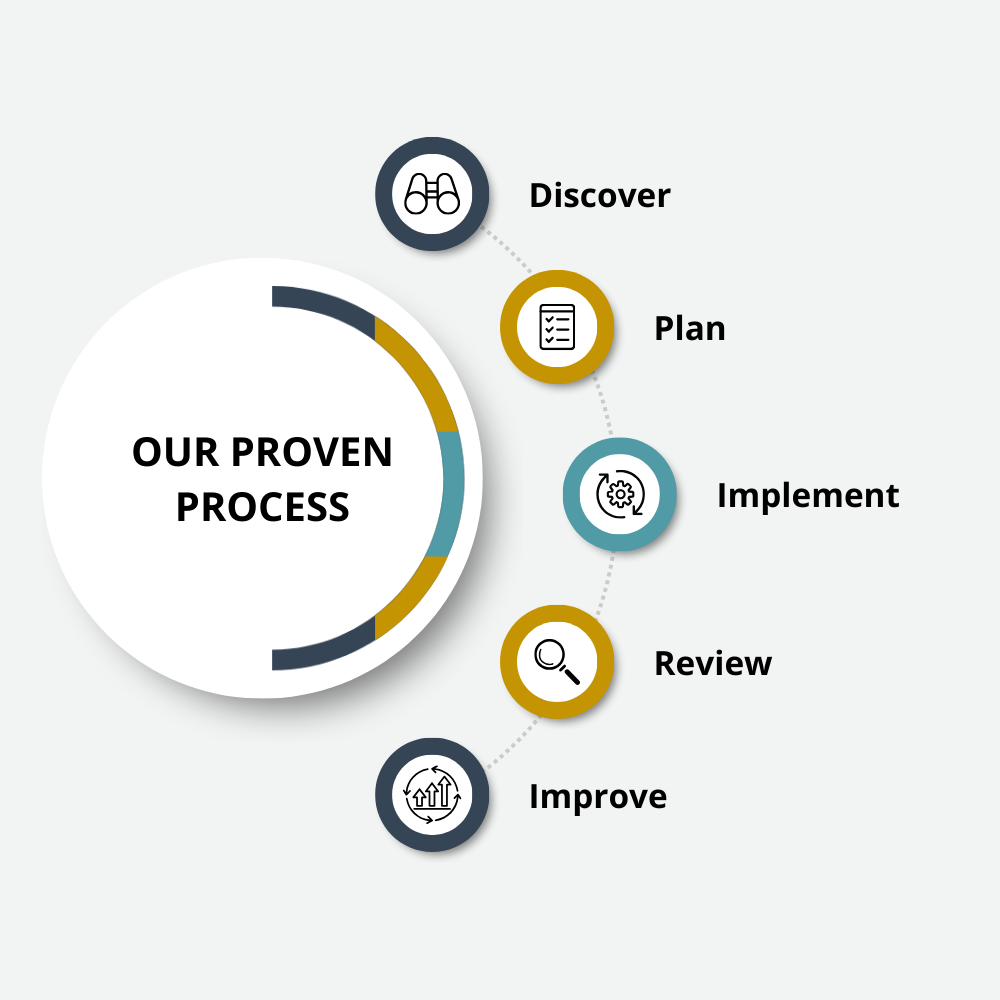Ask someone in the early or middle stages of their career to name their most valuable asset, and you’d likely get an answer along the lines of “my house” or possibly “my 401(k).” But for the vast majority of people in their prime working years, their most valuable asset is really the sheer ability to make a living. However, some never consider the severe financial impact they’d face should that ability be compromised by injury or illness. Further, though many focus on their need for life insurance during these early career years, many people disregard the fact that the probability of disability far exceeds the probability of untimely death. It is a risk that should always be addressed.
Many Americans believe Social Security Disability Insurance (SSDI) will act as their safety net in such circumstances. But the process of applying and qualifying for government aid comes with several challenges.
According to a recent study, in September 2017, the average waiting period for claimants to determine eligibility was 605 days. And that’s just the period of time they waited to see if they’d qualify for benefits. After the lengthy process, only 39% become approved (33% for first-time applicants) and waited a minimum of 180 days before actually receiving benefits. What’s more, the payout for many of those who are approved for SSDI fell considerably short when compared to their actual financial needs.
Fortunately, private disability insurance helps protect you and your family in the event you become unable to earn a regular paycheck. This overview will address key considerations when navigating which type and how much coverage best suit your personal situation.
Disability insurance 101
Defined broadly, disability insurance provides a percentage of what you would normally earn when an injury or illness renders you unable to work. While it may seem unlikely that you’d ever need to miss enough work to require coverage, the Social Security Administration reports that more than one in four 20-year-olds today will experience a disability for 90 days or more before they reach age 67. [1]
There are two primary classes of disability insurance: short-term and long-term. Short-term disability pays out a relatively high percentage of your monthly salary for a fixed period of time. Common reasons short-term policies pay out benefits include a lengthy illness, a disabling accident or injury, or the birth of a child.
Depending on the policy, you can expect to receive between 70 percent and 80 percent of your income for anywhere from a few months to a year. After the disability is reported, there is a fairly short waiting period—less than two weeks, usually—before you can begin drawing the coverage. This allows you to pay the bills that are certain to keep coming.
Long-term disability coverage, on the other hand, typically only replaces between 50 percent and 60 percent of your income[2]. With this type of policy, though, you may be covered for as long as you remain unable to work. Common reasons for long-term policy payouts include musculoskeletal disorders, nervous system-related conditions, cancer, or mental disorders.
There is usually a waiting period of up to 180 days between the beginning of the injury or illness and the first payment you receive. Premiums for long-term policies are generally more expensive than for short-term, since the total payout is higher and coverage period longer.
Picking a plan that suits your situation
A number of factors go into deciding which type of disability insurance—and how much—is appropriate for you and your family. Most experts recommend [3] first calculating your current monthly expenses then deducting any expenses that you might save when not working. Next, subtract any non-labor income you might have from that figure to arrive at the minimum monthly amount you’d need while out of work.
Here’s a brief list of income and expenses you’ll need to consider.
Income:
- Your salary and wages
- Your spouse’s salary and wages
- Capital gains from investments
- Government benefits and assistance
- Non-labor income
Expenses:
- Mortgage (or rent) and utilities
- Car payments
- Food and clothing
- Child care expenses
- Bank loans and credit card payments
- Medical expenses
- Insurance premiums (auto, homeowner’s, health, life, dental, etc.)
- Savings, investment and retirement contributions
- Education expenses
- Other (discretionary, entertainment, etc.)
When determining the right amount of coverage, it’s important not to overlook the impact of savings in your needs calculation. Let’s say you’re 35-years-old and plan to retire at age 65, but you become injured and unable to work. The regular contributions to your 401(k) or IRA would have realized 30 years of tax-deferred savings growth had you been able to continue working.
Not having those regular contributions invested over the span of three decades, the future value of your retirement savings is substantially less—putting you in danger of losing a comfortable retirement. Some disability and other supplemental policies will insure your savings with a tax-deferred benefit.
Own vs. Any Occupation
It is also imperative to understand how disability is defined within your policy’s terms. In general, disability claims will fall into two categories: own occupation and any occupation. Claims that are granted under an own occupation policy mean the individual may not be rendered totally helpless, however, the claimant is unable perform the critical duties of his or her occupation. For example, a dentist with a hand injury may file an own occupation claim since she cannot adequately perform the many duties of the job which require her hands.
More general policies use the any occupation standard, where claimants must be unable to perform the duties of any gainful occupation reasonably suited for the individual’s work experience or educational attainment (regardless of the potentially lower income from the replacement occupation). To avoid frustrating surprises in the claims process, make sure you fully understand the definitions within your policy.
Tax Considerations
Whether or not the benefits you receive from the policy will be taxed depends on whether the premiums for your coverage were paid with before- or after-tax dollars.
When your premiums are paid with pre-tax dollars, the dollars you receive from the insurance payout become taxable. This is often the case if your employer provides disability insurance as a fringe benefit and covers the entire premium (unless the cost of the premium is reported as income to you).
Conversely, an individual who purchases coverage themselves with after-tax dollars will not be taxed on the payouts received. While this is a simple explanation, there are many circumstances that make matters complicated. It’s always wise to consult with your tax professional to be sure you fully understand the tax implication of your policy.
Future Insurability Option
Also referred to as “Future Increase Option” or “Guaranteed Insurability,” having this optional rider in place protects your ability to increase disability coverage as your age and income progress, regardless of a change in health status.
The periodic increase in coverage is based on your income and requires little or no additional medical testing or underwriting. Many younger individuals who purchase a smaller amount of insurance as they start their careers find this option attractive. As income grows and life events warrant increased financial need—having children, a larger mortgage, etc.—you are assured to qualify for more coverage.
Cost of Living Adjustments (COLA)
Because of inflation, your living costs today will not be the same as what they will be in the future. The payout from a policy you purchased 10 years ago may be much less than you need to maintain your standard of living today.
To illustrate with an example, let’s suppose you’re 40 years old, earning an annual income of $250,000 and plan to retire at age 65. You become disabled and unable to work for the remainder of your career. Assuming a 2.5% annual rate of inflation, the $250,000 salary you earn today would be worth $136,160 when you retire—nearly halved over the course of 25 years.
To combat this, many policies will offer an optional rider for a COLA adjustment. This rider increases the amount of benefits you receive by a certain percentage in accordance with the annual inflation rate.
In addition to calculating your financial needs, you need to consider your unique risk profile. Statistically speaking, a person working a 9-5 desk job is less likely to be injured than a logger working with dangerous equipment and unpredictable environments.[4] While both professionals will require some level of coverage, the coverage needs of the logger are significantly more pressing due to the riskier nature of the job. Of course, your age, health and other lifestyle factors all matter when determining the right type of coverage.
Obtaining coverage
The most common means of actually obtaining disability insurance may be through your employer, with some companies offering short-term disability insurance as a universal benefit for all employees. Your employer may offer discounted long-term options in partnership with a third-party policy provider in addition to a basic package of benefits.
A policy offered by your employer, however, may not be ideally suited to your family’s unique situation.[5] For this reason, it’s a good idea to at least consult with outside insurers on their rates for the amount of disability insurance you’ve determined that you need. Taking this step could mean the difference in hundreds or thousands of dollars in premiums each year. It could also help you better determine how your family’s lifestyle would be impacted if a serious illness or injury were to put you out of work. In addition, if you change employers, with differences in available benefits, you might find yourself without long-term disability protection later in life, which could result in challenges in obtaining a new policy. The younger you are when you obtain a long-term disability policy, the more assured you can be that you’ll have it throughout your career cycle.
The bottom line is, for most of the workforce, disability insurance isn’t a luxury; it’s an essential building block of your family’s financial security. This type of coverage doesn’t have to be prohibitively expensive in the present—and it just might save you and your loved ones from the added stress of income loss while dealing with a serious illness or injury.
No matter your age, assets or type of coverage you’re seeking, it’s always wise to shop around and obtain multiple quotes before deciding on the best policy and provider. It’s also crucial to review and understand all details up front—so you or your loved ones don’t find out you have the wrong coverage after an event occurs. Guidance from a CERTIFIED FINANCIAL PLANNER® (CFP®) can help you address the different types of risk exposure and make calculated recommendations based on your life circumstances and long-term goals.
As a Senior Lead Advisor for JFS Wealth Advisors, Amanda Marcello has over 10 years of experience developing and monitoring tailored financial strategies for affluent individuals, families, and businesses. If you have questions relating to this or other investment and financial planning topics, contact Amanda at amarcello@jfswa.com.
Article Sources:
[1] NerdWallet, https://www.nerdwallet.com/blog/insurance/disability-insurance-explained/
[3] The Motley Fool, https://www.fool.com/personal-finance/2014/05/18/how-much-disability-insurance-do-you-need.aspx
[4] USA Today, https://www.usatoday.com/story/money/careers/2018/01/09/workplace-fatalities-25-most-dangerous-jobs-america/1002500001/
[5] 360 Financial Literacy, https://www.360financialliteracy.org/Topics/Spending-Saving/Insurance/Do-I-Need-Disability-Insurance
Additional sources:
https://www.trustedchoice.com/health-insurance/coverage-types/short-long-term-disability/




















